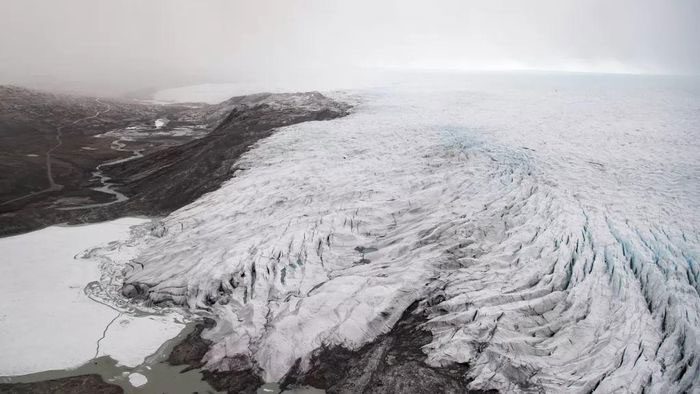Danish researchers have discovered that the massive ice sheet of Greenland has been melting at an alarming rate, with enough ice lost in just one day last week to cover the entire state of Florida with 5 cm of water.
Since July 27, approximately 9.37 billion tons of ice have disappeared daily from the surface of the colossal ice sheet, doubling its normal average loss rate for the summer, according to Polar Portal, a Danish website managed by Arctic climate scientists.

Ice in Greenland seen in May this year.
According to the Danish Meteorological Institute, the significant loss occurred after temperatures in northern Greenland soared above 20 degrees Celsius, double the average summer temperatures.
The high temperatures on July 28 resulted in the third-largest daily ice melt in Greenland since 1950; the second and largest daily ice loss occurred in 2012 and 2019. The annual ice loss from Greenland began to be monitored in 1990. In recent years, it has accelerated to about four times the rate seen before 2000.
Although the amount of ice melted during this summer event is less than two years ago, in some ways, it may be even worse.
According to estimates from the U.S. National Snow and Ice Data Center (NSIDC), global sea levels could rise by about 6 meters if all the ice in Greenland were to melt.
Xavier Fettweis, a climate scientist at the University of Liège in Belgium, estimates that about 24 billion tons of ice melted from Greenland’s ice sheet on July 28, with 12 billion tons entering the ocean.
The ice melt season in Greenland typically lasts from June to early September. According to Danish government data, this year’s melt season has seen more than 110 billion tons of ice flow into the ocean.
The ice in Greenland is the only permanent ice sheet on Earth outside of Antarctica and is nearly three times the size of Texas, covering an area of about 1.7 million square kilometers, according to the NSIDC.
According to the NSIDC, the ice sheets in Greenland and Antarctica account for 99% of the Earth’s freshwater reserves, but both are gradually losing mass at an increasing rate due to climate change.
The accelerating melting trend in Greenland is a pattern observed in other glacial regions around the world. From 2000 to 2019, glaciers on Earth lost an average of 293.7 billion tons per year, contributing to 21% of sea level rise.



















































